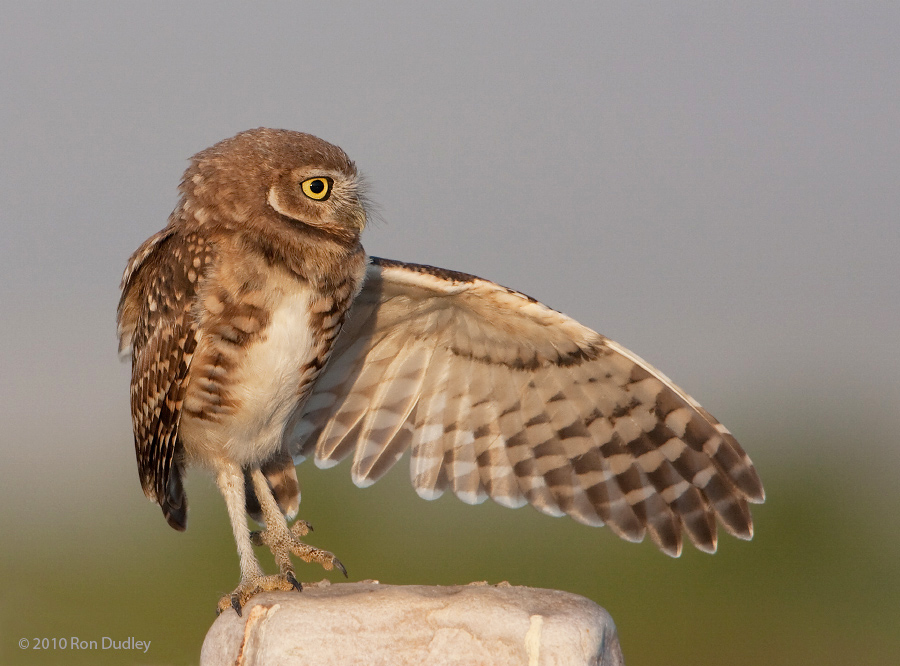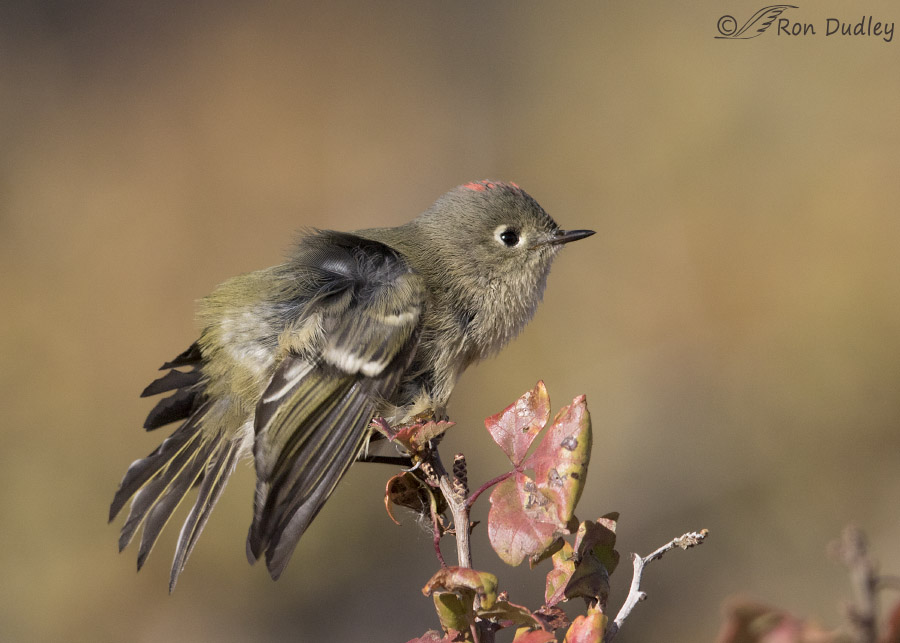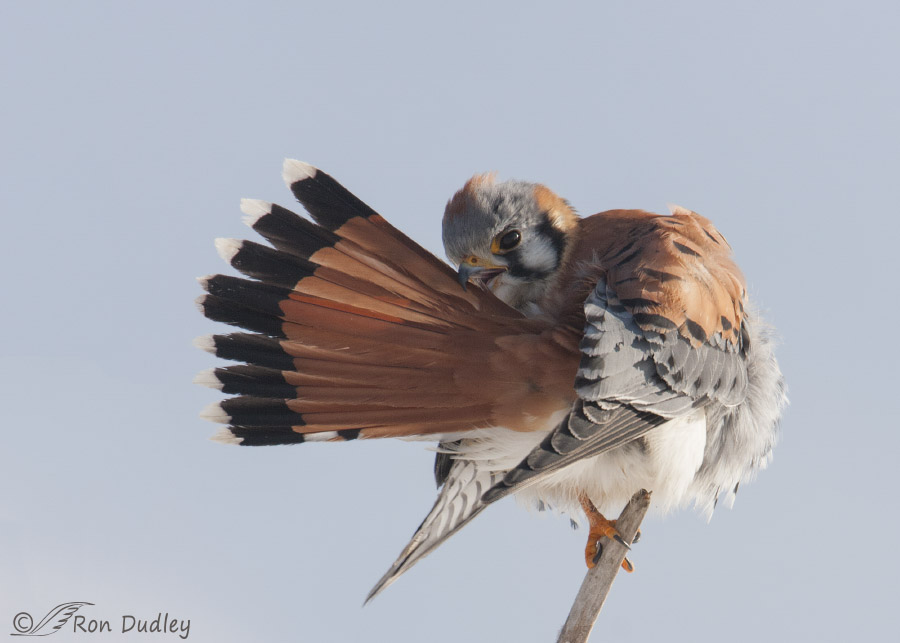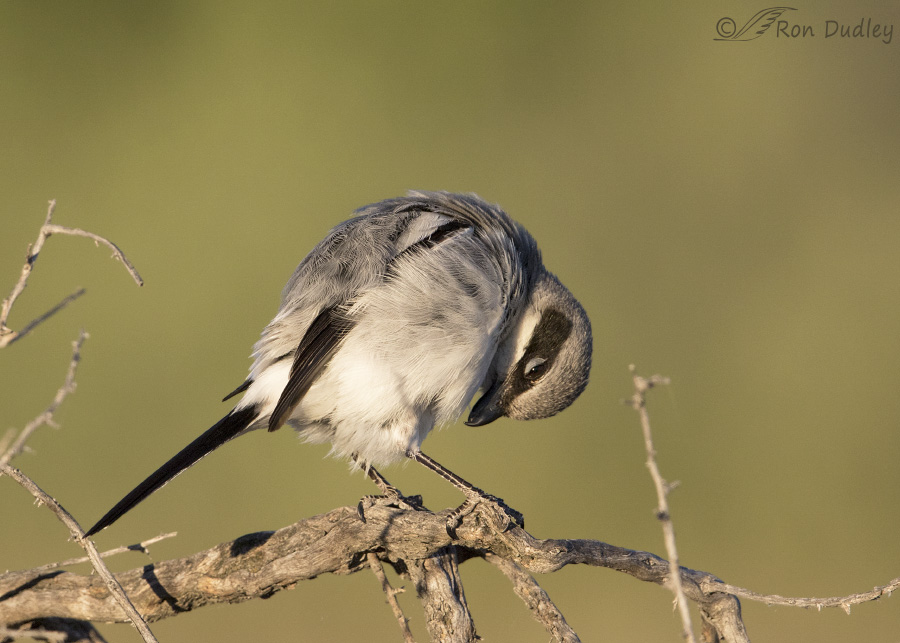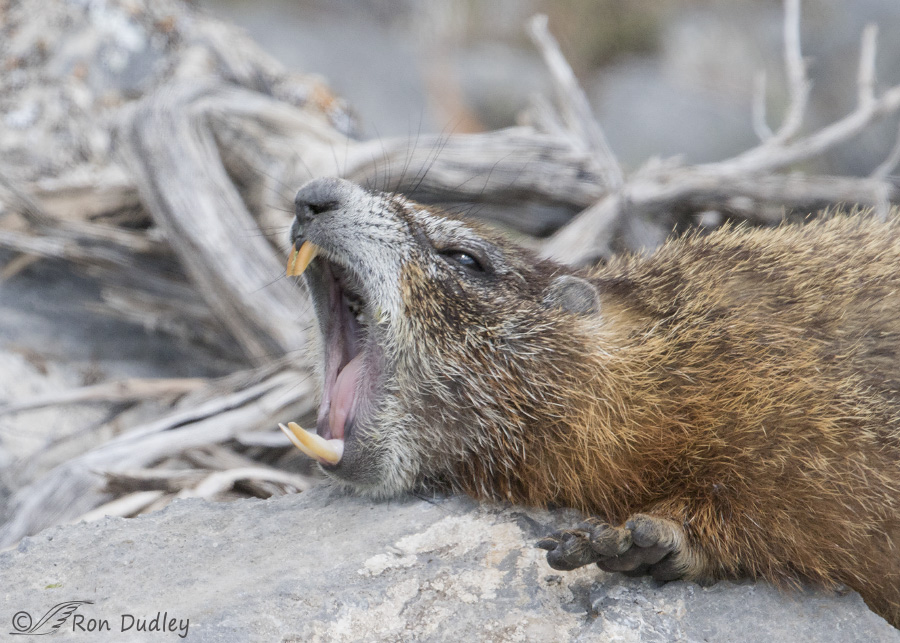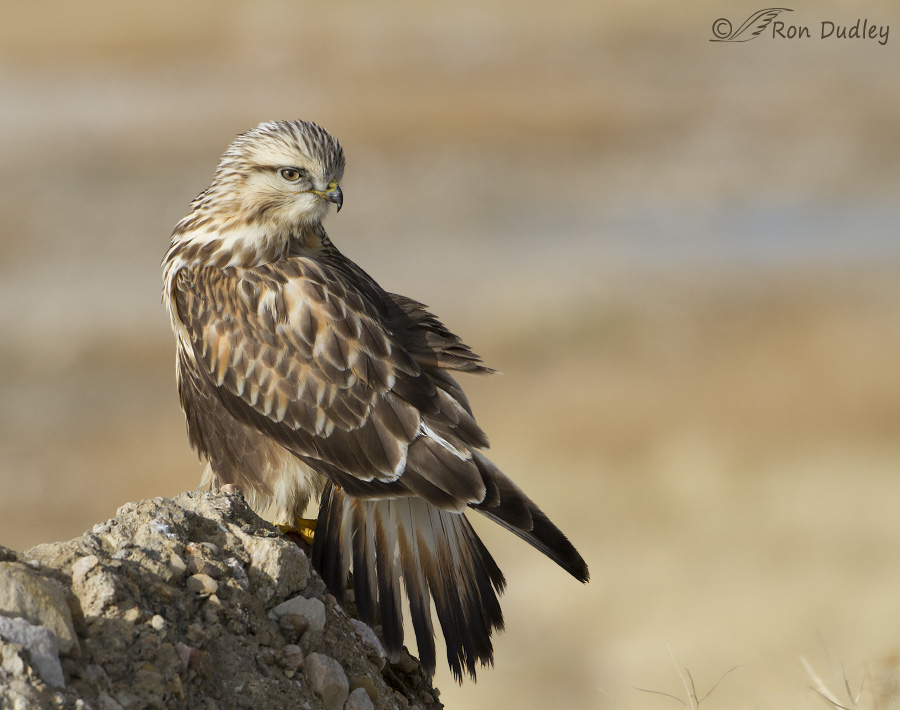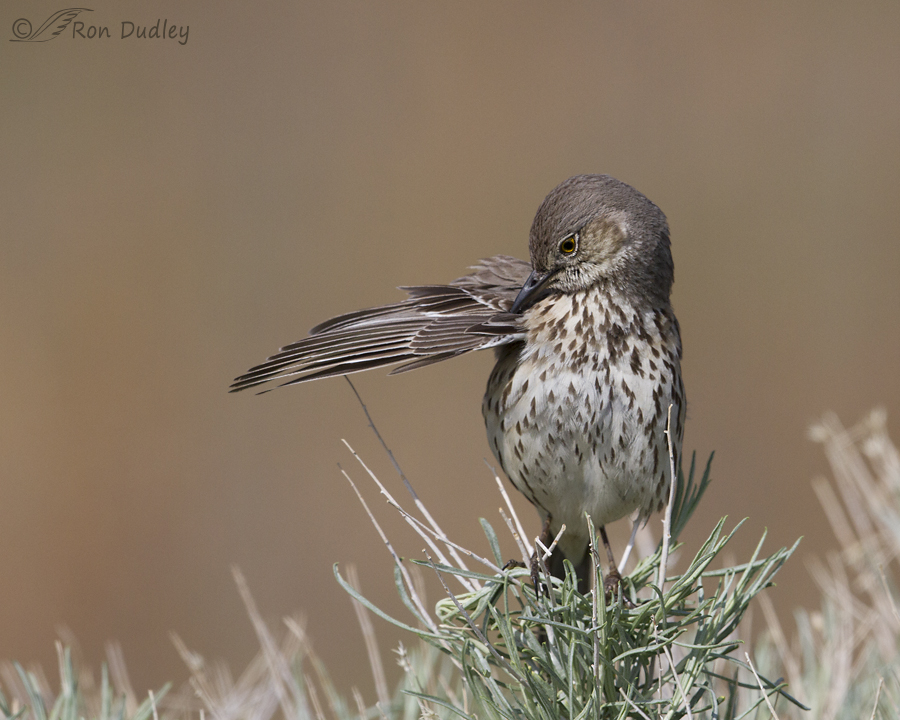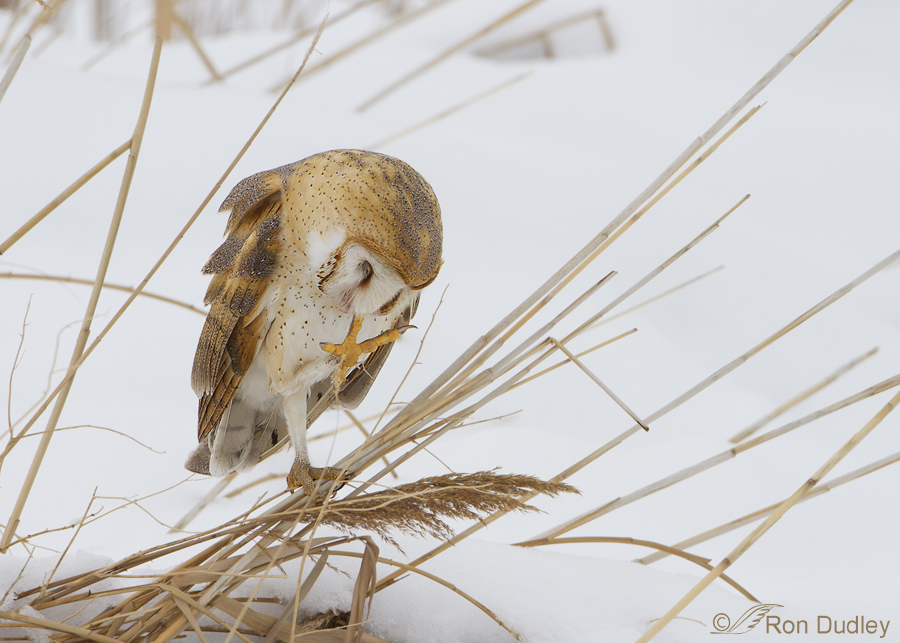Tag: grooming
Five Image Series Of A Rousing Ruby-crowned Kinglet
Male American Kestrel Working Over A Tail Feather
Grooming Loggerhead Shrike
Yellow-bellied Marmot – A Real Ham For The Camera
Rough-legged Hawk, By Request
Sage Thrasher Posing For Me
Perched Barn Owl Actually Doing Something
Grooming American Kestrel
This male American Kestrel preened for me for some time as he enjoyed the security of his favorite perch. He really worked over those tail feathers especially.
Black-necked Stilt Stretching and Preening
The Black-necked Stilt is an elegant study in contrasts with its white breast and shiny black wings accentuated by extremely long, bright red legs. They’re often found feeding near American Avocets and I’ve routinely been able to get preening and stretching images of avocets but the stilts have been less cooperative with me. Typically they’ll actively feed when I’m near but they always seem to fly off to do their self-maintenance. 1/2000, f/6.3, ISO 400, 500 f/4, 1.4 tc However, this bird apparently decided that flying off was too much effort and it unexpectedly began a series of stretches. 1/2000, f/6.3, ISO 400, 500 f/4, 1.4 tc I was able to photograph a variety of interesting poses but by this time the sun was relatively high and so some of the best shots are missing light in the eye. Stilts often pull their leg up over the wing when scratching the head. 1/2500, f/6.3, ISO 400, 500 f/4, 1.4 tc Because these birds are usually wading in water when I’m photographing them the extreme length of their legs is not always evident but catch one in a pose like this and it becomes quite apparent. 1/3200, f/6.3, ISO 400, 500 f/4, 1.4 tc I like the water splash and pose in this shot. 1/2500, f/6.3, ISO 400, 500 f/4, 1.4 tc Here the stilt has finished stretching for the moment and is contemplating its next move… 1/2000, f/6.3, ISO 400, 500 f/4, 1.4 tc which turned…
American Kestrel Preening on a Rabbitbrush Perch
American Kestrels are pugnacious and skittish little falcons that are usually difficult to approach. But last week I found a cooperative male warming himself in the early morning sun while perched on rabbitbrush. Though feisty by nature this kestrel looked almost cuddly while all puffed up against the cold and nestled into the bush. 1/2000, f/8, ISO 500, 500 f/4, 1.4 tc I first approached him head-on which gave me some images where bird and perch combined to produce a pyramid shape that I liked. 1/3200, f/6.3, ISO 400, 500 f/4, 1.4 tc But then I maneuvered to get a different angle so that at least part of the tail would be visible. In these early shots my camera settings were meant to give me enough shutter speed for the take-off that I fully expected. 1/2000, f/7.1, ISO 250, 500 f/4 But when he began to groom contentedly I started fiddling with my settings to get shutter speeds and depth of field more appropriate for the situation. Here he is passing one of his tail feathers through his bill in typical preening behavior. 1/1600, f/8, ISO 250, 500 f/4 He gave me a variety of preening poses that I liked. 1/1250, f/8, ISO 250, 500 f/4 Some of the neck feathers are difficult to reach so they go through some strange contortions in an effort to get to them. 1/1600, f/8, ISO 320, 500 f/4 Here the eye was half closed but I was still able to get a catch light. …
Bathing Cinnamon Teal/Green-winged Teal hybrid
Though bathing is a common activity for waterfowl it can make for some interesting photographs. I found this bird at Bear River Migratory Bird Refuge at the end of May last year. Cinnamon Teal x Green-winged Teal Hybrid male While I was processing some of the images I noticed the unusual crescent-shaped marking running through the eye to the back of the head that is typical of the Green-winged Teal. I asked several very knowledgeable birders about this bird and they think this is a CT/GWT hybrid, which apparently is quite unusual. Red eye looking at you through a layer of water While bathing he would repeatedly dunk his head and shoulders under water and then lift them up, which would roll water over its back and wings. An interesting process to watch and photograph at such close range. Here he’s looking at me through a layer of water over his head and eye as he brings his head out of the water. Forcing water over the back Here’s the water on the back. Washing the back feathers Then he would shake vigorously which would wash the back and upper wing feathers and send water droplets flying. Rearranging the wing feathers After so much vigorous activity the feathers, particularly those in the wing, needed rearranging to put them in their proper places. Preening after the bath Then came the preening. Lots of it. Here he is grooming individual breast/lower neck feathers. After the bath And here…
Burrowing Owls – Clowns of the Bird World
Of the many bird species I’ve photographed, Burrowing Owls by far show the most “personality”. Their repertoire of silly antics, funny poses, stretches, yawns and grooming behaviors are a photographers dream. And once they feel comfortable in your presence they will often allow you to photograph them for a very long time without flying off or retreating to their burrow. But you have to find them first… The antics of juveniles are even more exaggerated than those of adults. Most of the images I will present here are of juveniles. Some of the shots were taken in less than ideal conditions (harsh light, shadows, clutter) but I think they illustrate the goofball personalities of these birds well. Giving the photographer a suspicious look It’s difficult to resist being anthropomorphic (ascribing human emotion or motivation to non-human species) when it comes to Burrowing Owls so I won’t even try. This juvenile looks very suspicious of me but in reality I suspect that it was only curious. Wing-stretch with lifted foot, or “They went that-a-way!” Topsy turvy owl Juveniles practice their parallax skills regularly. It involves bobbing and twisting their heads so their eyes can view an object (in this case me) from different positions. This allows them to better determine distance to that object. I’m sure it’s serious business for the owls but to us it can sure look silly. And adorable. Reaction to sudden and unexpected rain One sunny and hot August morning I was photographing a pair of juveniles when a single cloud passed overhead and…
Five Image Series Of A Rousing Ruby-crowned Kinglet
Male American Kestrel Working Over A Tail Feather
Grooming Loggerhead Shrike
Yellow-bellied Marmot – A Real Ham For The Camera
Rough-legged Hawk, By Request
Sage Thrasher Posing For Me
Perched Barn Owl Actually Doing Something
Grooming American Kestrel
This male American Kestrel preened for me for some time as he enjoyed the security of his favorite perch. He really worked over those tail feathers especially.
Black-necked Stilt Stretching and Preening
The Black-necked Stilt is an elegant study in contrasts with its white breast and shiny black wings accentuated by extremely long, bright red legs. They’re often found feeding near American Avocets and I’ve routinely been able to get preening and stretching images of avocets but the stilts have been less cooperative with me. Typically they’ll actively feed when I’m near but they always seem to fly off to do their self-maintenance. 1/2000, f/6.3, ISO 400, 500 f/4, 1.4 tc However, this bird apparently decided that flying off was too much effort and it unexpectedly began a series of stretches. 1/2000, f/6.3, ISO 400, 500 f/4, 1.4 tc I was able to photograph a variety of interesting poses but by this time the sun was relatively high and so some of the best shots are missing light in the eye. Stilts often pull their leg up over the wing when scratching the head. 1/2500, f/6.3, ISO 400, 500 f/4, 1.4 tc Because these birds are usually wading in water when I’m photographing them the extreme length of their legs is not always evident but catch one in a pose like this and it becomes quite apparent. 1/3200, f/6.3, ISO 400, 500 f/4, 1.4 tc I like the water splash and pose in this shot. 1/2500, f/6.3, ISO 400, 500 f/4, 1.4 tc Here the stilt has finished stretching for the moment and is contemplating its next move… 1/2000, f/6.3, ISO 400, 500 f/4, 1.4 tc which turned…
American Kestrel Preening on a Rabbitbrush Perch
American Kestrels are pugnacious and skittish little falcons that are usually difficult to approach. But last week I found a cooperative male warming himself in the early morning sun while perched on rabbitbrush. Though feisty by nature this kestrel looked almost cuddly while all puffed up against the cold and nestled into the bush. 1/2000, f/8, ISO 500, 500 f/4, 1.4 tc I first approached him head-on which gave me some images where bird and perch combined to produce a pyramid shape that I liked. 1/3200, f/6.3, ISO 400, 500 f/4, 1.4 tc But then I maneuvered to get a different angle so that at least part of the tail would be visible. In these early shots my camera settings were meant to give me enough shutter speed for the take-off that I fully expected. 1/2000, f/7.1, ISO 250, 500 f/4 But when he began to groom contentedly I started fiddling with my settings to get shutter speeds and depth of field more appropriate for the situation. Here he is passing one of his tail feathers through his bill in typical preening behavior. 1/1600, f/8, ISO 250, 500 f/4 He gave me a variety of preening poses that I liked. 1/1250, f/8, ISO 250, 500 f/4 Some of the neck feathers are difficult to reach so they go through some strange contortions in an effort to get to them. 1/1600, f/8, ISO 320, 500 f/4 Here the eye was half closed but I was still able to get a catch light. …
Bathing Cinnamon Teal/Green-winged Teal hybrid
Though bathing is a common activity for waterfowl it can make for some interesting photographs. I found this bird at Bear River Migratory Bird Refuge at the end of May last year. Cinnamon Teal x Green-winged Teal Hybrid male While I was processing some of the images I noticed the unusual crescent-shaped marking running through the eye to the back of the head that is typical of the Green-winged Teal. I asked several very knowledgeable birders about this bird and they think this is a CT/GWT hybrid, which apparently is quite unusual. Red eye looking at you through a layer of water While bathing he would repeatedly dunk his head and shoulders under water and then lift them up, which would roll water over its back and wings. An interesting process to watch and photograph at such close range. Here he’s looking at me through a layer of water over his head and eye as he brings his head out of the water. Forcing water over the back Here’s the water on the back. Washing the back feathers Then he would shake vigorously which would wash the back and upper wing feathers and send water droplets flying. Rearranging the wing feathers After so much vigorous activity the feathers, particularly those in the wing, needed rearranging to put them in their proper places. Preening after the bath Then came the preening. Lots of it. Here he is grooming individual breast/lower neck feathers. After the bath And here…
Burrowing Owls – Clowns of the Bird World
Of the many bird species I’ve photographed, Burrowing Owls by far show the most “personality”. Their repertoire of silly antics, funny poses, stretches, yawns and grooming behaviors are a photographers dream. And once they feel comfortable in your presence they will often allow you to photograph them for a very long time without flying off or retreating to their burrow. But you have to find them first… The antics of juveniles are even more exaggerated than those of adults. Most of the images I will present here are of juveniles. Some of the shots were taken in less than ideal conditions (harsh light, shadows, clutter) but I think they illustrate the goofball personalities of these birds well. Giving the photographer a suspicious look It’s difficult to resist being anthropomorphic (ascribing human emotion or motivation to non-human species) when it comes to Burrowing Owls so I won’t even try. This juvenile looks very suspicious of me but in reality I suspect that it was only curious. Wing-stretch with lifted foot, or “They went that-a-way!” Topsy turvy owl Juveniles practice their parallax skills regularly. It involves bobbing and twisting their heads so their eyes can view an object (in this case me) from different positions. This allows them to better determine distance to that object. I’m sure it’s serious business for the owls but to us it can sure look silly. And adorable. Reaction to sudden and unexpected rain One sunny and hot August morning I was photographing a pair of juveniles when a single cloud passed overhead and…


